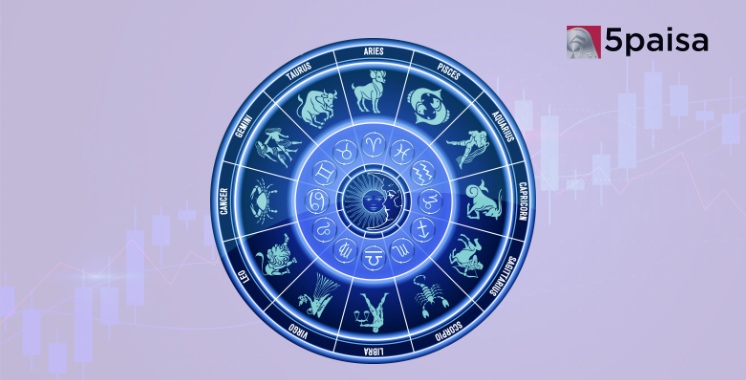Short Build Up in Options: A Trend to Follow or Avoid?
History of Reliance Group

Reliance Industries is a name that's become synonymous with success in India. Reliance's history is a fascinating story of ambition, innovation, and growth, from its humble beginnings as a small textile company to its current status as one of India's largest conglomerates.
Let's take a journey through time and explore how Reliance became the powerhouse it is today. We'll look at its early days, major milestones, and the various businesses it's involved in now. Whether you're interested in business, investing, or just curious about one of India's biggest companies, there's something here for everyone.
About Reliance Group
Reliance Industries Limited, often simply called Reliance, is a huge Indian company that does business in many different areas. It was started by Dhirubhai Ambani in 1958 and is now led by his son, Mukesh Ambani.
Reliance began as a small textile company in Mumbai, Maharashtra. Over the years, it grew and expanded into many other businesses. Today, Reliance is involved in:
● Oil and gas: They find, produce, and refine oil and gas.
● Petrochemicals: They make various chemical products from petroleum.
● Retail: They run thousands of stores across India, selling everything from groceries to electronics.
● Telecommunications: Their company, Jio, provides phone and internet services to millions of Indians.
● Digital services: They offer various online services and apps.
Reliance is known for thinking big and using new technologies. For example, when it started Jio in 2016, it offered very cheap data plans that changed how many Indians used the internet.
Here are some interesting facts about Reliance:
● It's one of the most valuable companies in India.
● It has over 340,000 employees.
● Its main office is in Mumbai, but it does business all over India and in many other countries.
● In 2022, Reliance's revenue was more than 7 lakh crore rupees (about $92 billion).
Reliance has grown a lot since its early days. Let's look at some key moments in its history:
The Early Days (1958-1966)
The history of Reliance begins with Dhirubhai Ambani, a visionary entrepreneur from Gujarat. In 1958, Dhirubhai started a small textile trading business with just ₹15,000 in Mumbai. He began by exporting spices and other commodities to Yemen.
In 1966, Dhirubhai took a significant step by establishing Reliance Commercial Corporation. This company focused on importing polyester yarn and exporting spices. During this time, Dhirubhai saw the potential in the textile business, particularly in synthetic fabrics.
Entering Manufacturing (1966-1977)
Recognizing the opportunity in synthetic textiles, Dhirubhai decided to move from trading to manufacturing. In 1966, he set up a textile mill in Naroda, Gujarat. This marked Reliance's entry into the manufacturing sector.
The company quickly gained a reputation for quality products. Its brand, 'Vimal', became a household name in India for fabrics and garments.
Going Public (1977)
In 1977, Reliance Industries held its Initial Public Offering (IPO), marking a turning point in the company's history. This move allowed Reliance to raise capital from the public and expand its operations further.
Interestingly, the Reliance IPO was oversubscribed seven times, showing the public's faith in the company. This IPO created a new class of retail investors in India, many of whom were first-time investors in the stock market.
Expansion and Diversification (1980s-1990s)
The 1980s and 1990s saw Reliance expanding rapidly and diversifying into new areas:
● 1981: Reliance entered the textiles and polyester filament yarn business.
● 1985: The company started a polyester staple fibre plant.
● 1991: Reliance entered the petrochemicals business with a plant at Hazira, Gujarat.
● 1993: Reliance Petroleum Limited was incorporated.
● 1997: Reliance introduced packaged LPG in India.
Reliance was also integrated backward during this period, moving from textiles to fiber to petrochemicals. This strategy helped the company control costs and improve efficiency.
The New Millennium (2000-2010)
The early 2000s brought both challenges and opportunities for Reliance:
● 2002: Dhirubhai Ambani passed away, leaving the company in the hands of his sons, Mukesh and Anil.
● 2005: The company split between the two brothers, with Mukesh retaining control of Reliance Industries.
● 2007: Reliance acquired a stake in various companies abroad, marking its global expansion. 2009: Reliance commissioned the world's largest petroleum refinery in Jamnagar, Gujarat.
The Digital Revolution (2010-Present)
The most recent chapter in Reliance's history has been marked by its entry into digital services:
● 2016: Reliance Jio was launched, revolutionizing India's telecom sector with its affordable data plans.
● 2019: Reliance became debt-free, nine months ahead of its March 2021 target.
● 2020: During the COVID-19 pandemic, Reliance raised over $20 billion by selling stakes in Jio Platforms to global tech giants like Facebook and Google.
● 2021: Reliance announced its plans to invest in renewable energy, aiming to become a net carbon-zero company by 2035.
Throughout its history, Reliance has shown a knack for identifying emerging opportunities and adapting to changing market conditions. From textiles to petrochemicals to digital services, the company has consistently reinvented itself to stay at the forefront of India's economic growth.
Reliance's history is not just a story of a company's growth but also a reflection of India's economic journey over the past six decades. As Reliance continues to evolve and expand into new areas like renewable energy and e-commerce, it remains a key player in shaping India's economic future.
Subsidiaries of Reliance Group
Reliance Industries has grown into a huge company with many different businesses. These separate businesses are called subsidiaries. Let's look at some of the main subsidiaries of Reliance:
1. Jio Platforms Limited: This is Reliance's digital and telecom arm. It includes:
● Reliance Jio Infocomm: Provides 4G and 5G mobile services
● JioMart: An online grocery shopping platform
● JioSaavn: A music streaming service
2. Reliance Retail Ventures Limited: This runs Reliance's retail businesses, including:
● Reliance Fresh: Grocery stores
● Reliance Digital: Electronics stores
● AJIO: Online fashion shopping
3. Reliance Petroleum Limited: Handles oil refining operations.
4. Reliance Life Sciences: Works on biotechnology, including developing new medicines.
5. Network18 Media & Investments Limited: Manages Reliance's media properties, including TV channels and news websites.
6. Reliance Industrial Infrastructure Limited: Provides infrastructure support for other Reliance businesses.
7. Reliance Strategic Business Ventures Limited: Invests in and manages new business opportunities.
These subsidiaries allow Reliance to operate in many different sectors. For example, through Jio, they can offer phone services, while Reliance Retail lets them sell groceries and clothes. This diversity helps Reliance spread its risks and find new growth opportunities.
Each subsidiary has its own management team, but they all report to the main Reliance Industries leadership. This structure helps Reliance manage its many different businesses effectively.
Reliance Dividend History
Dividends are a way for companies to share their profits with shareholders. Reliance has a history of paying dividends regularly. Here's a table showing Reliance's dividend history for the past few years:
Reliance Dividend History
| Sr. No. | Financial Year | Final / Interim | Dividend Per Share (Rs.) | Rate (%) |
|---|---|---|---|---|
| 1 | 2022-23 | Final | 9 | 90 |
| 2 | 2021-22 | Final | 8 | 80 |
| 3 | 2020-21 | Final (Fully Paid-up) | 7 | 70 |
| 3 | 2020-21 | Final (Partly Paid-up) | 3.50* | 70 |
| 4 | 2019-20 | Final (Fully Paid-up) | 6.5 | 65 |
| 4 | 2019-20 | Final (Partly Paid-up) | 1.625* | 65 |
| 5 | 2018-19 | Final | 6.5 | 65 |
| 6 | 2017-18 | Final | 6 | 60 |
| 7 | 2016-17 | Final | 11 | 110 |
| 8 | 2015-16 | Interim | 10.5 | 105 |
| 9 | 2014-15 | Final | 10 | 100 |
| 10 | 2013-14 | Final | 9.5 | 95 |
| 11 | 2012-13 | Final | 9 | 90 |
| 12 | 2011-12 | Final | 8.5 | 85 |
| 13 | 2010-11 | Final | 8 | 80 |
| 14 | 2009-10 | Final | 7 | 70 |
| 15 | 2008-09 | Interim | 13 | 130 |
| 16 | 2007-08 | Final | 13 | 130 |
| 17 | 2006-07 | Interim | 11 | 110 |
| 18 | 2005-06 | Final | 10 | 100 |
| 19 | 2004-05 | Final | 7.5 | 75 |
| 20 | 2003-04 | Final | 5.25 | 53 |
| 21 | 2002-03 | Final | 5 | 50 |
| 22 | 2001-02 | Final | 4.75 | 48 |
| 23 | 2000-01 | Final | 4.25 | 43 |
| 24 | 1999-2000 | Interim | 4 | 40 |
| 25 | 1998-99 | Interim | 3.75 | 38 |
| 26 | 1997-98 | Final | 3.5 | 35 |
| 27 | 1996-97 | Final | 6.5 | 65 |
| 28 | 1995-96 | Final | 6 | 60 |
| 29 | 1994-95 | Final | 5.5 | 55 |
| 30 | 1993-94 | Final | 5.1 | 51 |
| 31 | 1992-93 | Final | 3.5 | 35 |
| 32 | 1991-92 | Final | 3 | 30 |
| 33 | 1990-91 | Final | 3 | 30 |
| 34 | 1989-90 | Final | 3 | 30 |
Note: These figures are for the financial year ending March 31 of each year.
As you can see, Reliance has generally increased its dividend over the years. This shows the company's commitment to sharing its success with shareholders. However, it's important to remember that past dividends don't guarantee future dividends. Companies decide on dividends based on their current financial situation and future plans.
Reliance stock split history
A stock split is when a company increases the number of its shares while proportionally decreasing the price of each share. This doesn't change the total value of your investment, but it can make individual shares more affordable for new investors.
Reliance has had several stock splits in its history. Here's a table showing Reliance's stock split history:
| Date | Split | Multiple | Cumulative Multiple |
| 07-09-2017 | 02:01 | x2 | x8 |
| 26-11-2009 | 02:01 | x2 | x4 |
| 27-10-1997 | 02:01 | x2 | x2 |
These splits have made Reliance shares more accessible to a wider range of investors over the years. They also show how the company has grown and increased in value over time.
Conclusion
The history of Reliance is a remarkable story of vision, perseverance, and adaptability. Reliance has consistently demonstrated an ability to evolve with changing times and seize new opportunities, from its humble beginnings as a small textile trading business to its current status as one of India's largest conglomerates.
- Flat ₹20 Brokerage
- Next-gen Trading
- Advance Charting
- Actionable Ideas
Trending on 5paisa
Indian Stock Market Related Articles
Disclaimer: Investment in securities market are subject to market risks, read all the related documents carefully before investing. For detailed disclaimer please Click here.

 5paisa Research Team
5paisa Research Team




